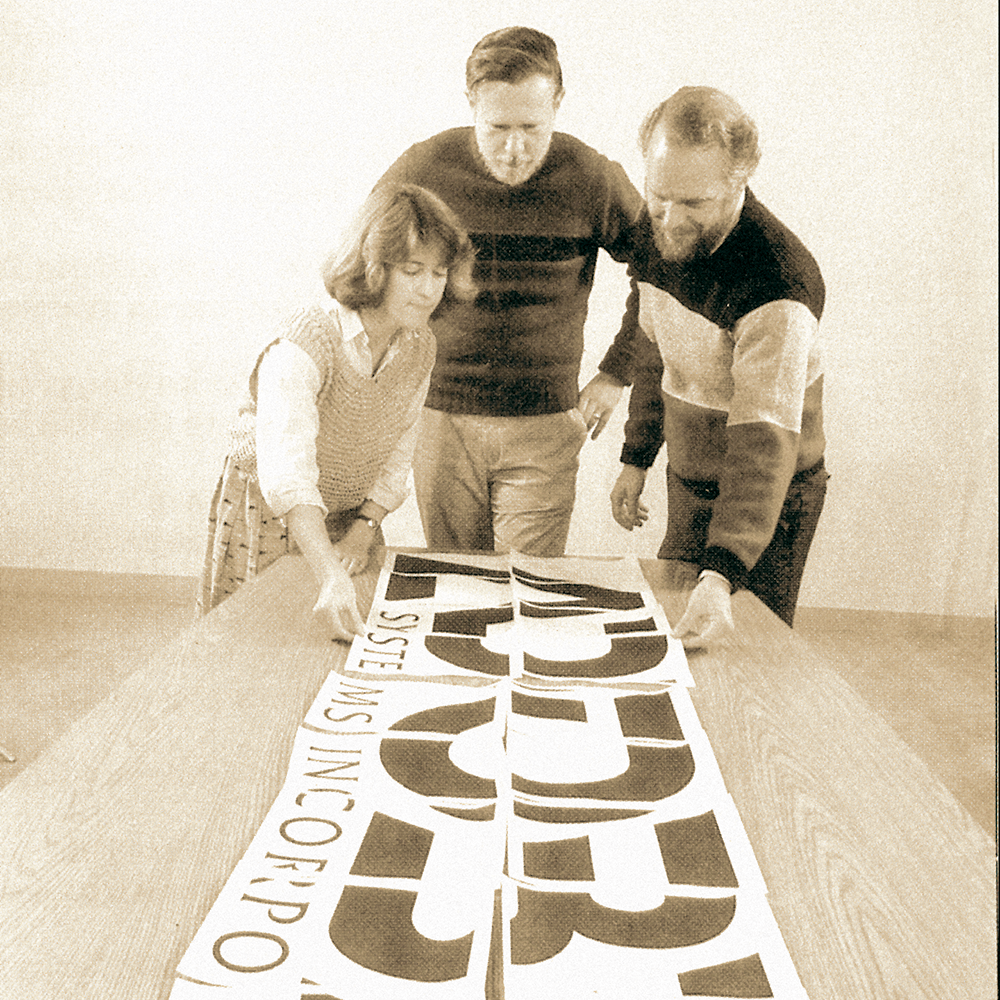
December 31, 2009
Art Matters to Architecture

View of the west wall of Milton Glaser’s mural “Color Fuses” (1975) after restoration. Image by Mark Williams, Imagenation, LLC. Property of the U.S. GSA.
On the Art21 blog, Richard McCoy has written a detailed post on the restoration of Milton Glaser’s “Color Fuses” mural, a site-specific work that wraps the first floor on the 1975 Minton-Capehart Federal Building in Indianapolis. Glaser worked with the building’s architect Evans Woollen, who McCoy quotes as saying he hoped the mural would make the structure “cheerful, disarming, fresh, welcoming, and inviting.”
The restoration, paid for with funds from the 2009 American Recovery and Reinvestment Act, looks gorgeous, and has the added benefit of a new lighting system for nighttime illumination that works the way Glaser always intended.
In the evening, the building’s entire loggia is encircled in light coming from the LED lamps. The building vibrates with color. If you watch closely, you see a wave of bright light slowly moving around the building, illuminating the bands of colors and then going dark. As the light washes over each color, they seem to come a little bit more alive. It all moves at about the pace of someone walking slowly past the building. The effect is impossible to fully capture in still photos, but can be understood better through video. The GSA has a page dedicated to the project, complete with a very good video.
As followers of my Twitter account know, I will retweet anything Glaser. But what struck me most about this story was the collaboration of designer and architect, and the integration of the art with the Brutalist architecture. Without this mural, and even with the mural faded and indifferently illuminated, this was a different building. It was a dark house without a welcome mat. A mass without a marked door. Another concrete building in a plaza. And it was never intended to be that way.

Pirelli Tire Building, New Haven; Marcel Breuer & Associates (1970). Photograph by Ty Cole.
Brutalism has been back in the news recently, with arguments about why to save buildings many don’t love, why we should love Brutalism intellectually, and how diverse the concrete structures can be. I particularly like the comments thread of that last Awl piece, with people posting their favorite ugly-beautiful choice. Personally, I am in the Pirelli Building camp. But none of these articles have discussed the ways architects of the modern period, in concrete as well as glass and steel, used art to build in the welcome they knew their building design lacked.
Paul Rudolph’s 1963 Art & Architecture Building, for example, is larded with both. On the lesser Chapel Street facade, Rudolph’s art department colleague Robert Engman contributed a liquid column of biomorphic holes, embedded in a rough bush-hammered wall. The dark switch-back staircase is filled with surprise benches and surprise fragments, indicating that the small space is intended for contemplation, not rush. All of Rudolph’s glorious drawings of the building also include abundant foliage, more appropriate to the Florida climate he had just left than to New Haven’s long winters. I think, in turning to art and nature, these architects were acknowledging the very criticisms still lodged, and attempting to address them. Is it all their fault that maintenance, conservation and light bulbs fail?

Art and Architecture Building, Yale University, New Haven, Connecticut, Partial exterior perspective; Paul Rudolph (1958). At the Museum of Modern Art.
For a period statement about the need for art and nature as a mediator between modernism and humanity, and architects’ understanding of the need for this mediation, we can turn to Lewis Mumford. On Gordon Bunshaft and SOM’s 1954 Manufacturers Hanover Trust bank, and the bronze Harry Bertoia screen (also recently restored) therein, Mumford writes,
Though it is purely abstract, making no effort at symbolic significance, it humanizes these quarters even more effectively than the living plants, mainly because it suggests something frail, incomplete, yet unexpected and defiant of rational statement, and thus lovable, a note that is not audible in most of the representative architectural expressions of our time.
I see the same frail power in Glaser’s mural. The color is strong, but it is as ephemeral as paint, a mere layer on the concrete walls. And the fades are so delicate, so easily disrupted by sun-fading and poor lighting. The staircase becomes a graphic statement in color, an adventure like Rudolph’s rather than a poor second choice. How many other buildings are called uninviting after someone rolls up their welcome mat?
Observed
View all
Observed
By Alexandra Lange
Recent Posts
Ellen McGirt|Design and Climate Change
What will we do when all the levees break? The Halls and The Streets ft. Congresswoman Barbara Lee & One Fair Wage’s Saru Jayaraman How to pitch Design Observer In the Work ft. L’Oreal Thompson Payton, Dr. Christina Bejarano, Dr. Wendy Smooth, & dancing


